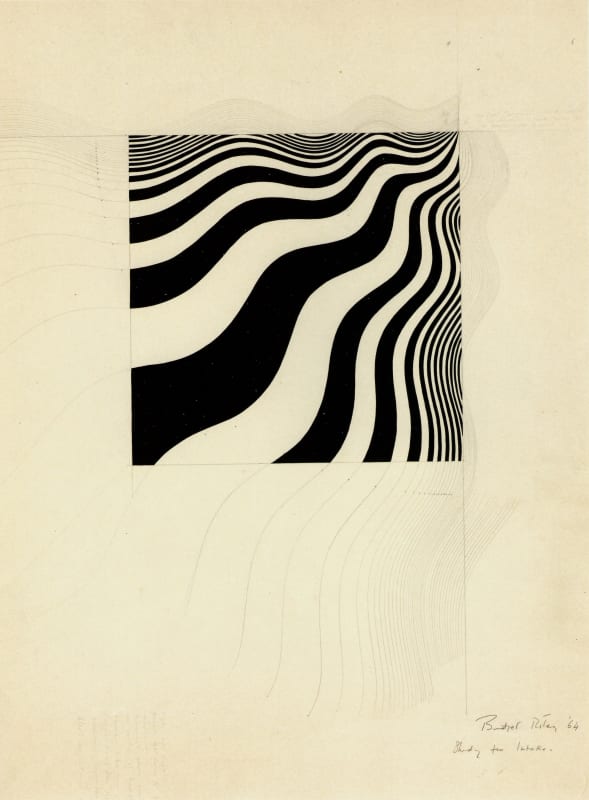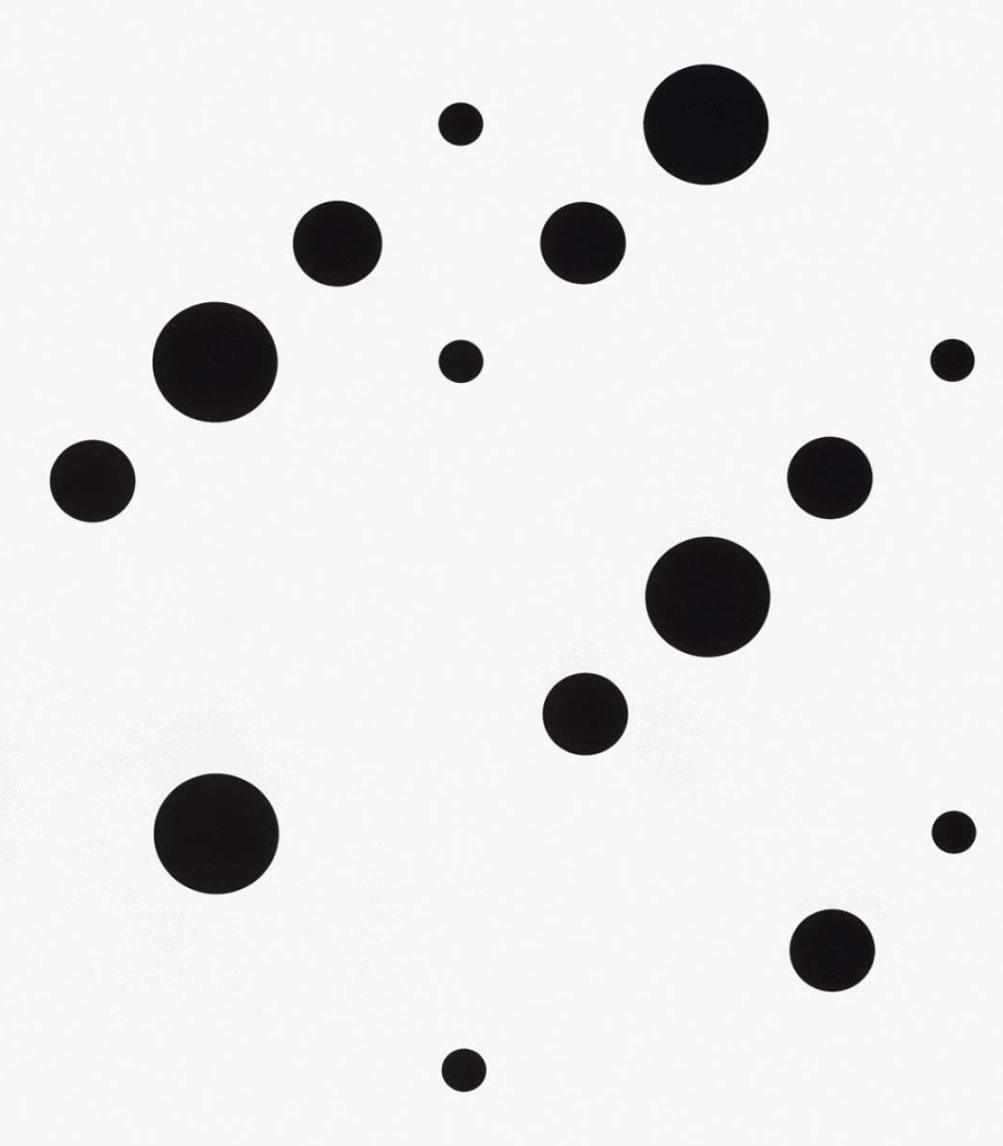Bridget Riley: Works 1960-1966
In 2012 Hazlitt Holland-Hibbert and Karsten Schubert presented, Bridget Riley: Works 1960–1966, the first exhibition ever solely dedicated to the artist’s iconic black and white period. Spread over both galleries the show featured forty-five works, including major paintings from public and private collections, gouache studies as well as the complete prints.
The show was accompanied by a fully illustrated catalogue which features three major historic texts; interviews with Maurice de Sausmarez and David Sylvester both conducted in 1967, and ‘Perception is the Medium’ (1965), which is a manifesto-style text in which Riley sets out her artistic position with the clarity for which all her writing since has become famous.
-
 White Discs 2, 1964Synthetic emulsion on board41 x 39 inches; 104 x 99 cm
White Discs 2, 1964Synthetic emulsion on board41 x 39 inches; 104 x 99 cm -
 Untitled (Study for Intake), 1964Gouache on paper28 ½ x 20 ⅞ inches; 72.5 x 53 cm
Untitled (Study for Intake), 1964Gouache on paper28 ½ x 20 ⅞ inches; 72.5 x 53 cm -
 Untitled (Wide Spacing Slow Movement), 1964Gouache on graph paper12 ⅞ x 11 ⅜ inches; 32.8 x 29 cm
Untitled (Wide Spacing Slow Movement), 1964Gouache on graph paper12 ⅞ x 11 ⅜ inches; 32.8 x 29 cm -
 Untitled (Wide Spacing Fast Movement), 1964Gouache on graph paper13 ½ x 11 ⅜ inches; 34.2 x 29 cmSigned, dated and inscribed as title
Untitled (Wide Spacing Fast Movement), 1964Gouache on graph paper13 ½ x 11 ⅜ inches; 34.2 x 29 cmSigned, dated and inscribed as title







